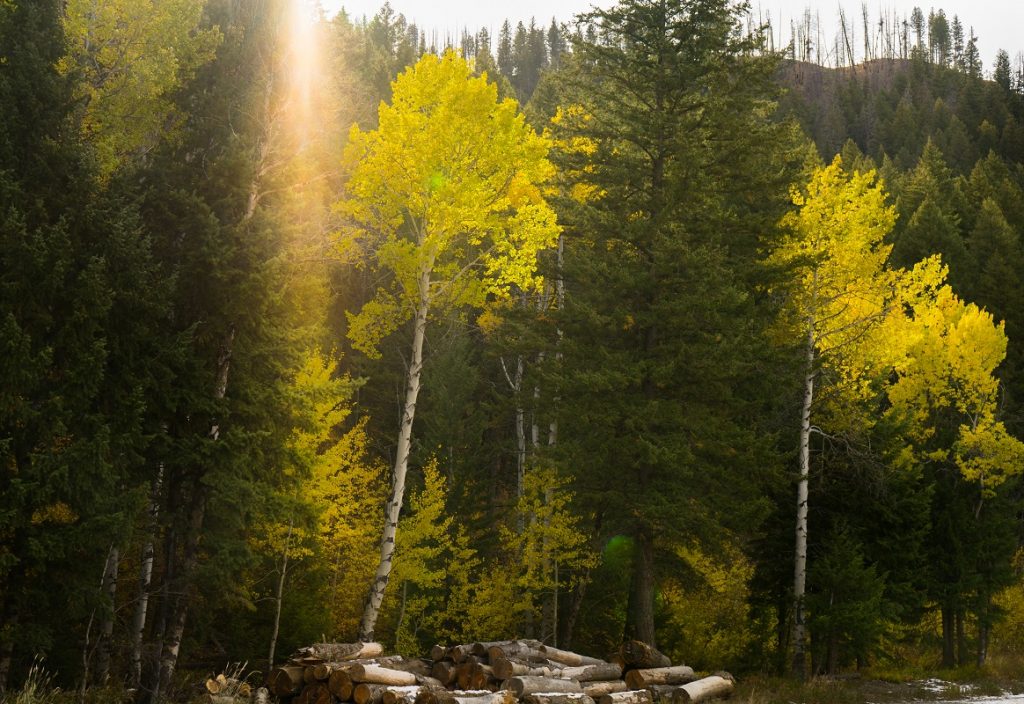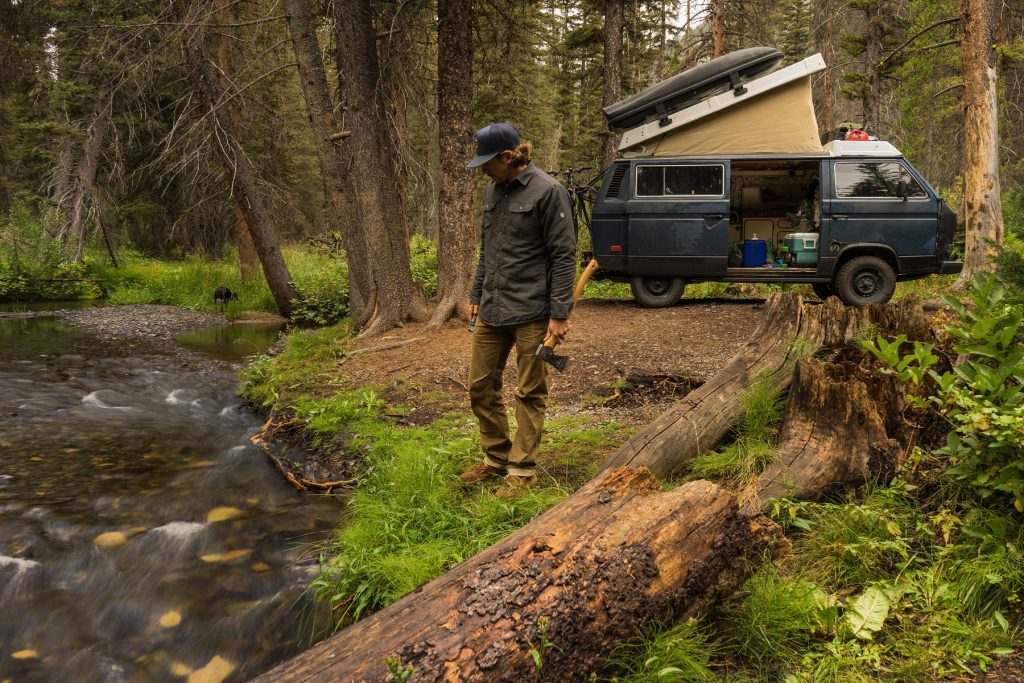
Bearanoid? Don't Let Bears Keep You Out of the Backcountry - Part One
Table of Contents [Show]
If you've seen The Revenant, Backcountry, or even Annihilation, perhaps you developed a wee bit of bear paranoia. I personally think that these over-the-top movies elicit a healthier attitude towards bears than, say, Tim Treadwell's cuddly-wuddly philosophy as documented in Grizzly Man. Somewhere in the middle is where common sense lies. Bears almost never attack when unprovoked, and if you stay out of their way and take basic precautions, the bear encounters you experience will result in a sense of wonder and gratitude, rather than a sensationalized news story.
I've spent a lot of time in coastal Alaska as a fishing guide, and grew up exploring the California Sierras and the Rocky Mountains. As with any outdoor adventure, risk management is key to safety. "Bearanoia" is a term I apply to the initial nervousness expressed by my outfitting clients, but I've figured out that equipping them with the right tools and information helps them feel more confident in their safety.
In honor of May being National Be Bear Aware and Wildlife Stewardship Month - and the time when both bears and hikers come out of hibernation - here's the information I impart to my more urban-inclined clients, both in pre-trip packing tips and in on-the-spot safety talks.
Understanding North American Bears
North America is home to three of the world's eight bear species: American black bears (Ursus americanus), the North American brown bear (Ursus arctos) and the polar bear (Ursus maritimus). Each has its own set of subspecies, but the only brown bear with the claim to the name "grizzly" is U. arctos horribilis, which are those you'd encounter as far south as Idaho, Montana, and Wyoming.
If you weren't born and raised in polar bear territory, chances are you'll be exploring with a guide experienced in that environment. I'll leave that to them and focus on the bears you might encounter on your adventures in the "48", Southeastern Alaska, and subarctic Canada.
Distinguishing black bears from browns
Brown bears are rarely black, but brown black bears aren't at all uncommon. Some black bears are far more massive than the average brown. If you're in an area where both species are known to range, your best bet is to recognize the species by shape.
- Black bear face profiles are straight and even from the top of the forehead to the tip of the nose; brown bears have a concave profile.
- Black bear ears are taller and more easily seen from a side-view; brown bears have low-profile, rounded ears.
- On a brown bear front paw track the claw marks are usually 2" to 4" from the toe pads, and rarely more than 1.5" from those of a black bear.
- A black bear's "big" toe is an entire length lower than the rest, and all the toes are arranged in an arch. A brown's first toe is much smaller than, but level with, the rest of its toes, which line up in a neat row.
Note that those last points are for identifying bear tracks. I don't recommend picking up a bear's paw to determine the species; you'll end up having a very bad time.

Understanding bear behavior
Bear behavior varies among species, gender, and season, so there's no single rhyme, mnemonic, or dirty limerick to help you remember what to do during an encounter. A tactic to defuse conflict with a black bear might trigger aggression in a brown. Within each species, there are conditional dos and don'ts. I'll share what I know, and what I tell my clients:
- A standing bear is trying to see you; this does not indicate aggression.
- Snuffing, teeth chattering, and turning sideways means the bear feels threatened.
- Charges are most often bluffs, ending in foot stomping and chuffing.
- Black bear mothers with cubs rarely go on the offensive. They'll either herd their cubs away or send them up a tree, standing guard near the base.
- Predatory bears will stealthily trail you from behind in a focused manner.
- Even calm, disinterested bears can suddenly charge if startled, and can run 25-35 mph. Don't take them for granted.
Bears have daytime vision equivalent to or better than ours. They can see in color, and they have excellent night vision. They're most active around dawn and dusk, when it's harder for all of us see, so take extra care during these times.
Brushing up on bear etiquette
If you encounter a bear on the trail, remember that you're in their home. Your behavior influences the outcome, and most bear attacks are the result of human error. These are, in bear culture, good manners:
- Avoid eye contact.
- Never turn your back on a bear.
- Don't make sudden movements, but try to appear larger; step up on a sturdy bank, mound, or stump and SLOWLY wave your arms.
- Gather your group together and pick up any small kids. Your dogs should be leashed.
- Use careful side-steps to get out of a bear's way; only back up if you're confident you won't trip.
- Leave the area, giving the bear a wide berth. NEVER run from any bear.
- Speak in a firm, low, neutral voice for the duration of the encounter to let the bear know where you are.
- Avoid screaming, shrieking, whistling, and shrill voices. Do not imitate bear sounds; this is threatening.
- Don't throw food to lure a bear away from your group. They'll know where to get more.
If a bear knows you're not trying to pull one over on him, he'll relax. Be casual, but alert.

Responding to an outright attack
Bear attacks are extremely rare. Predatory bears may be sneaky, but if you maintain situational awareness, you'll usually notice them in enough time to deploy your bear spray. If you're actively being attacked, fight for your life, focusing on the bear's nose, snout, and eyes. Only play dead if you're being attacked by a female (sow) brown bear with cubs:
- Keep your pack on to help protect your back.
- Drop flat on your stomach.
- Lace your fingers behind your neck.
- Splay out your elbows and legs to resist being rolled over.
- If you are rolled over, keep rolling so you're back on your belly.
Sows with cubs want to neutralize the threat and bail from the scene as soon as possible. Predatory bears are looking for a meal, and are most often in a physical condition that doesn't afford them the luxury of being picky. Surprised bears are just flat-out freaked out; if they feel cornered they'll fight until flight becomes the best option.
I tend to classify bears that hang around fishing spots as nuisance opportunists. They're not out to eat you, but they've become habituated to careless anglers leaving bait, roe, guts, and heads behind. They're usually very mellow, but I always pick up my gear and move my clients to another section of the river and instruct everyone to be prepared to deploy their bear spray.
Featured image by Zdeněk Macháček.
Part two


